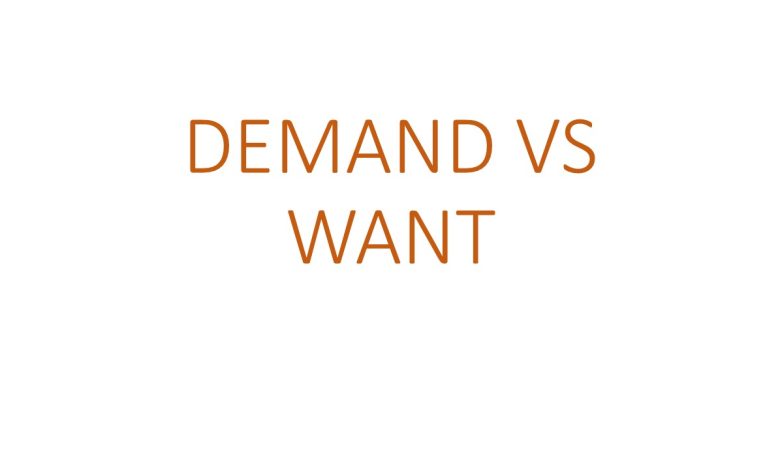Understanding Differences Between Demand And Want in WASSCE Economics

There are some terms in economics that some people don’t know their differences, and one of them is demand and want. So, this article is written to explain the differences and make you come to an understanding of it with examples.
Wants simply means the desire or wish to own goods or services that give satisfaction. Human beings want or need many things at a particular time. The basic needs or wants are food, shelter, and clothing. As these basic needs are satisfied, other needs will arise. This is why we say that human wants are insatiable. This is because human wants are unlimited while resources used to satisfy them are limited.
Demand is defined as the amount or the quantity of goods and services that a consumer is willing to buy, coupled with the ability to pay at a given price and at a particular time
Differences between Demand and Want
Economists divided demand into two categories, and they are effective and ineffective demand. With these categories, want falls under ineffective demand. Understanding this division will then help to differentiate between demand and want.
The ability to commit one’s resources at a given time to buy an item is a major differentiator between effective and ineffective demand. Anybody can desire or want a thing but may not have the ability (resources) to get the item. So, this makes such want fall into ineffective demand.
Demand is backed up by the necessary ability, which is money and willingness to pay, while want or mere desire is not backed up by the ability and willingness to pay at that material time.
For instance, everybody likes to own a car, but not all who want to own cars have the necessary wherewithal to have them. Also, not all who want or desire cars backed up with the ability required to pay are willing to pay for the cars.
Market Prices: This also plays a role in differentiating between demand and want. If the market prices of commodities are high, the effective demand of people may change to ineffective demand and vice versa. For example, if a pack of chocolate costs $20 and one leaves home with the intention of buying the chocolate at $20. But on getting to the grocery store, the price changes from $20 to $50, and one’s demand will change to want (mere desire) because you won’t be willing to pay for it at that particular time. And this is because you left home with only $20.
